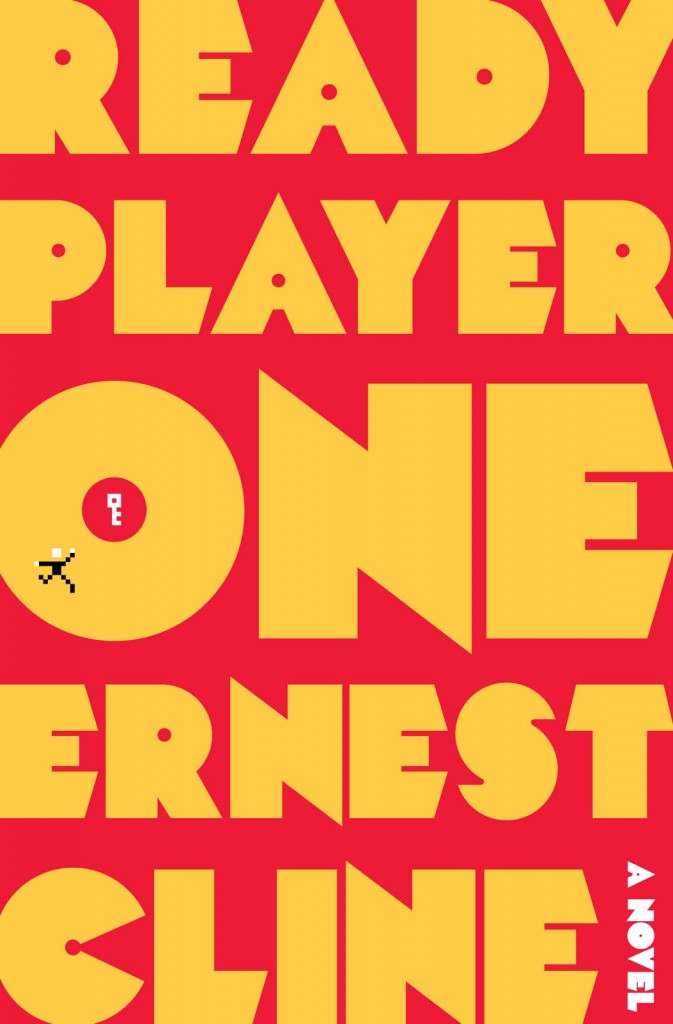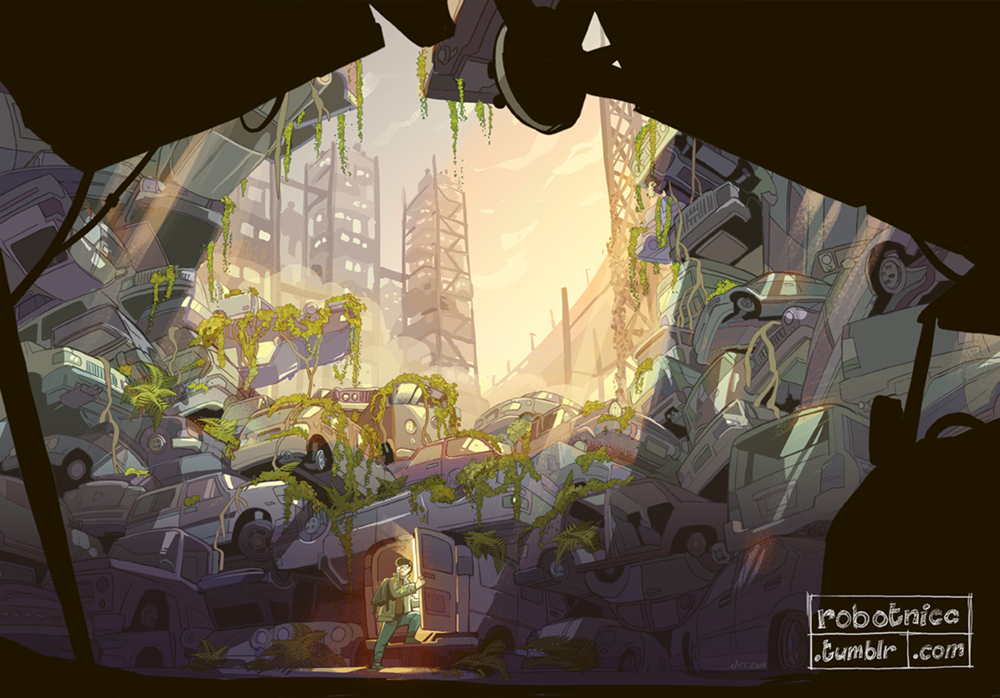Book Review: Ernest Cline’s Ready Player One
Whether you’re someone who would understand all the ‘80s references made in this book, or just the type who enjoys reading novels about augmented reality, this book will surely be a thrilling ride through the virtual and the real.
Ready Player One, written by Ernest Cline, is a sci-fi novel jam-packed with a lot of video game and pop culture references, usually dating from the 1980’s. The novel focuses on a teenager named Wade Watts, who lives in a trailer park just outside Oklahoma City. Set in the year 2044, he spends most of his time in the OASIS—a massive multiplayer online virtual reality simulation created by James Halliday, a true geek at heart, and Ogden Morrow, his business partner and (maybe) only friend. Originally planned to be another one of those MMORPGs—massively multiplayer online RPGs—it soon turned into the safe haven that people ran to in order to avoid all the issues that they had to face in the real world: poverty, global climate change, diseases, and everything else that falls in-between. Pretty soon, most of their lives took place in the OASIS: from children going to school, shopping in virtual malls, to levelling up and stacking up points in order to acquire better stuff for your avatar, which works just like how avatars are in our time—as a representation of the person online.
What’s the catch?
It was when James Halliday had died that things started changing. By the time his death was announced to the world, he also sent a video to every OASIS user on the very same day. The video showed Halliday as he aged through his years, and the video also contained a lot of ‘80s references—something that he loved dearly. He showed everyone the video games he had played, including the one wherein he found his first Easter egg. He then told his audience that he had hidden an Easter egg in the OASIS (after all, it was first conceptualized to be a game for everyone to play) and challenged everyone to go look for it. The first person who finds it gets the grandest prize of all—they get to own OASIS, and also get all the wealth Halliday had. Near the end of the video, Halliday’s appearance changed to that of Anorak—his well-known avatar. Anorak instructed everyone that there will be three keys to open three gates, and these will lead them to the prize. He ended the video with a riddle that would help everyone get to the first key.
For the first few years after the video had aired all over the globe, millions of users had started searching for the egg. Theories were made as to where its exact locations would be, and it became a fad that a lot of people followed for a while. But just like fads come, they start fading away eventually. After numerous failed attempts and not even getting close to finding a key, a lot started giving it up and concluded that maybe Halliday was just an old nut job, after all.
Not everyone thought like that, though. One of them was Wade. And although he doesn’t really have a lot of money—both in the real world and in OASIS—with the aid of his friends, a lot of knowledge ,practice, AND a lot of luck, he goes on his quest to find the egg.
What’s so good about Ready Player One?
Despite having a lot of ‘80s references to things that some people (e.g. yours truly) might not understand—examples would be references to Dungeons & Dragons, Star Wars, Cosmos, Back To The Future, and lots more—there’s still enough room to enjoy it simply for the story. I have to admit, there were times when the references were albeit too detailed for me, but if you’re someone who knows a lot about ‘80s stuff—from music to movies to video games and everything in-between—then I’d have a feeling you’d enjoy this book.
The story also brings you to A LOT of places. Just for a quick overview: OASIS is sort of like an open world game—meaning you could explore all you want until where the world ‘ends’—only 100 times more awesome. Imagine those 3D games you see or play on the Internet, and imagine that you’re actually in it, and that you even have the capacity to feel, smell, and taste whatever it is you want to! In addition to that, OASIS was designed by Halliday and Morrow to contain not only hundreds, but thousands of planets all floating around the space created for it.
In order for someone to explore these worlds, they must have an avatar. It’s a “One Person, One Avatar” policy in the OASIS, so you can’t have multiple accounts that do different things—since this is virtual reality we’re talking about, the translation is that you can’t really be in two places at once: that’d be cheating and unfair to the other users. Once you have your avatar, you can customize it however you want: either replicate yourself into the OASIS, or create your ideal self. The avatar system in this game is similar to those you find in our world (think The Sims), so there’s nothing much to explain here.
As you read on, you see Wade—or better known as Parzival in the virtual reality world—move through planets and ride on ships (when he finally started getting money) as he travels around OASIS, in search of the keys and the gates they open. He does this along with the friends whom he met and got to know online: Aech, Art3mis, Daito, and Shoto. It goes to show that this novel also makes us aware of how life on the Internet is like (minus all the cool ‘virtual reality’ stuff): you may meet your closest friends online, and they might even be halfway across the world. Along with that, it shows that you have to put in a lot of trust in other people, and also let yourself be trusted.
Reality vs. Virtual Reality
The novel shifts from reality to virtual reality a lot of times, and it shows a stark difference: in the OASIS, the worlds looked more real than ever, minus all the negative things. In the real world, you don’t get to subtract that—it just is. The world has gotten worse by the year 2044, with wars and poverty being a normal thing in that generation. Global climate change has gotten worse, and nothing much has changed in terms of how governments handled their cities. Then again, anyone with a pair of gloves and a haptic visor can just lock themselves in their rooms and go on the OASIS, so who would care anyway?
In the OASIS, you could choose to go out and explore the world, but if you stayed in the safe, no PvP (Player versus Player) zones, it’s basically the real world places in the virtually real world. Malls, clubs, parks, etcetera—along with that would be ads everywhere and anywhere. It’s like the world just moved on from actually going to malls and shop, to just staying at home and still shop and do whatever.
Going back to the real world, hints of its decay are prominent when Wade goes around America, from the shanties that he lived in, to the metropolis that he ventures in for the first time. People are still living, of course—there are still so many users in the OASIS, anyway—and there’s not much difference from how they are now (in our time) to what they’ve become after 3 decades had passed. It’s kind of scary to think that by then, besides the advancement in virtual reality, nothing else is new. OASIS was just the new extension of the Internet. Everything else just kept getting worse.
Back to the overview
Ready Player One never fails to make its readers aware of what could come in the near future, and yet at the same time takes them to places unimaginable (both in a literal and a figurative sense), from the realer-than-real virtual reality OASIS, to the different worlds that exist inside it. Focus is not only on Parzival either, as Aech, Art3mis, Daito, and Shoto also have their moments of glory.
In the end, after reading this novel, you might find yourself taking a breather after everything that has happened. Again, despite all its geeky references, it’s still a fun and enjoyable read.
What’s next?
There’s talk on the novel being turned into a movie, and Warner Bros. has assigned Zack Penn (the guy who also helped in The Incredible Hulk and X-Men: Last Stand) to re-write the first draft of the script. As mentioned by Alex Billington, “it’s a hard book to adapt into a movie, because there’s so much going on. They need to get all the references in there,” and he’s hoping that with enough support from the film studios and proper funding, the movie might turn out to capture the awesomeness in Cline’s novel.
I think I’ve said enough already about Ready Player One. If you want to know more about it, go and read the book!
Sources
Ready Player One book cover, first printing: http://52books52.wordpress.com/2012/05/29/lost-in-the-80s-tonight-ready-player-one-by-ernest-cline/
OASIS Logo: http://enter-the-oasis.com/
Wade’s Hideout: http://robotnicc.tumblr.com/post/95532654935/my-take-on-wade-watts-hideout-in-ready-player
Ready Player One fansite: http://readyplayerone.com/
Jeff Sneider and Lucas Shaw, “‘X-Men’ Scribe Zak Penn to Rewrite ‘Ready Player One’ for Warner Bros. (Exclusive)”, http://www.thewrap.com/x-men-scribe-zak-penn-to-rewrite-ready-player-one-for-warner-bros-exclusive/
Alex Billington, “Screenwriter Zak Penn Rewriting ‘Ready Player One’ for Warner Bros”, http://www.firstshowing.net/2014/screenwriter-zak-penn-adapting-ready-player-one-for-warner-bros/
Colin Lecher, “A writer for ‘The Avengers’ is taking on the ‘Ready Player One’ movie adaptation”, http://www.theverge.com/entertainment/2014/6/24/5839192/zak-penn-ready-player-one-pacific-rim-2




Comments